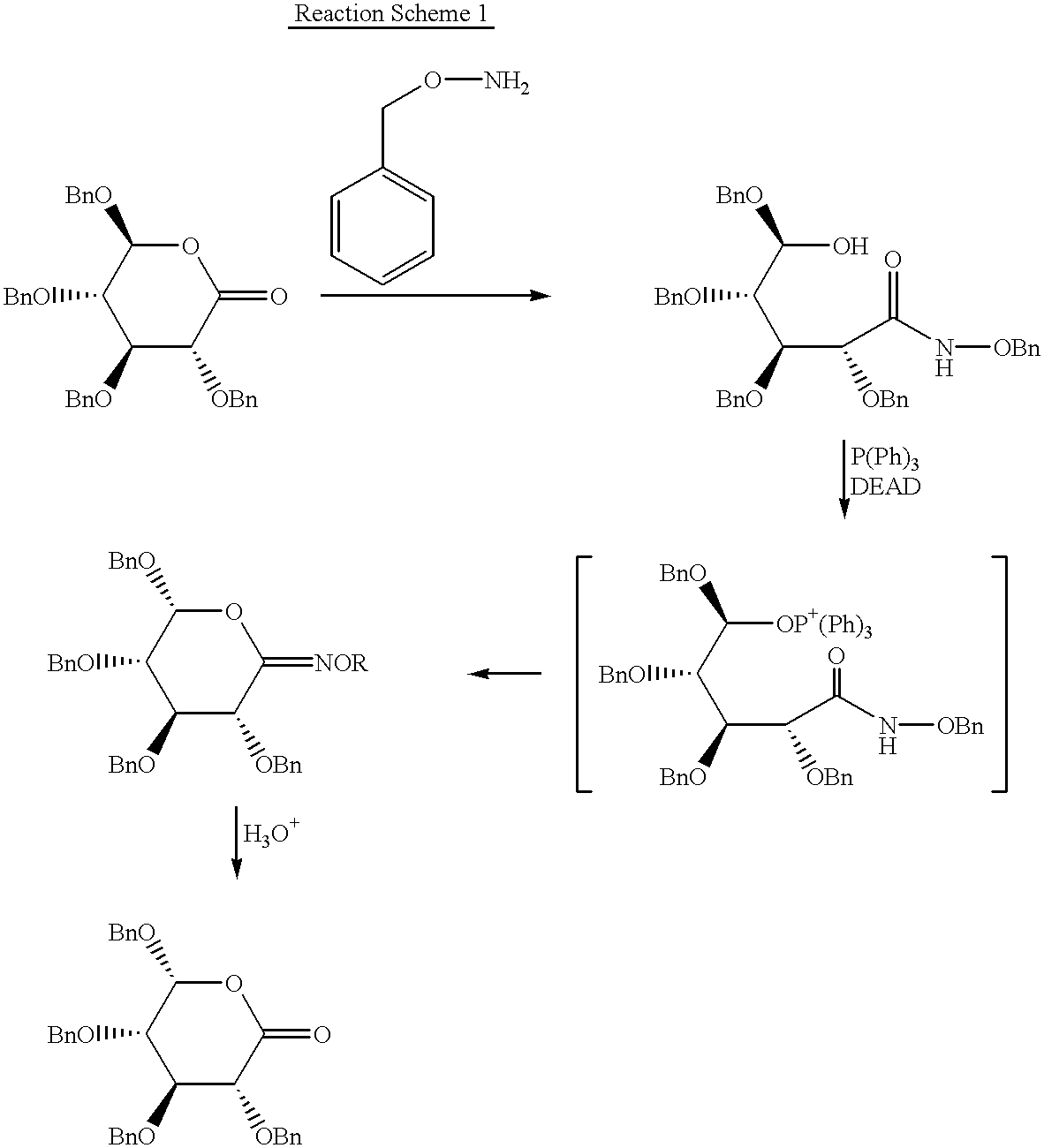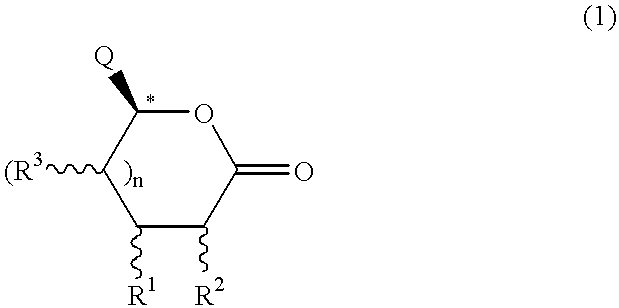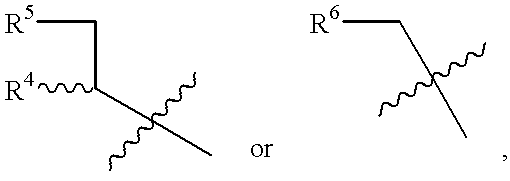Chirality conversion method in lactone sugar compounds
a technology of chirality and conversion method, which is applied in the direction of sugar derivatives, chemistry apparatus and processes, organic chemistry, etc., can solve the problems of poor efficiency of chirality conversion method, inability to be used on an industrial scale, and too expensive starting materials such as benzyloxyamine or dead,
- Summary
- Abstract
- Description
- Claims
- Application Information
AI Technical Summary
Benefits of technology
Problems solved by technology
Method used
Image
Examples
example 1
Conversion to 2,3:5,6-di-O-isopropylidene-D-talono-1,4-lactone ##STR9##
2,3:5,6-Di-O-isopropylidene-D-manono-1,4-lactone (16 g, 62 mmole) was dissolved in ethyl acetate (32 ml) and then piperidine (124 mmole) was added dropwise thereto at 0.degree. C. After TLC revealed the completion of reaction, excess piperidine and solvent were removed by distillation under reduced pressure. The reactants were dissolved again by adding ethyl acetate (100 ml). Subsequently, triethylamine (Et.sub.3 N; 13.8 ml) and dimethylaminopyridine (100 mg) were added under nitrogen gas stream, and methanesulfonylchloride (9.6 ml, 124 mmole) was added dropwise at 0.degree.C. After TLC revealed the completion of reaction, water was added to stop the reaction. The reaction mixture were extracted with ethyl acetate from the aqueous layer, dried over anhydrous magnesium sulfate, and concentrated under reduced pressure. The residue was purified by silica gel column chromatography (eluent: hexane / ethyl acetate=3 / 1, v...
example 2
Conversion to 2,3:5,6-di-O-cyclohexylidene-D-talono-1,4-lactone ##STR10##
2,3:5,6-Di-O-cyclohexylidene-D-manono-1,4-lactone (10 g, 30 mmole) was dissolved in ethyl acetate (32 ml) and then piperidine (60 mmole) was added dropwise thereto at 0.degree. C. After TLC revealed the completion of reaction, excess piperidine and solvent were removed by distillation under reduced pressure. The reactants were dissolved again by adding ethyl acetate (100 ml). Subsequently, triethylamine (Et.sub.3 N; 6.6 ml) and dimethylaminopyridine (50 mg) were added under nitrogen gas stream, and methanesulfonylchloride (4.6 ml, 60 mmole) was added dropwise at 0.degree. C. After TLC revealed the completion of reaction, water was added to stop the reaction. The reaction mixture were extracted with ethyl acetate from the aqueous layer, dried over anhydrous magnesium sulfate, and concentrated under reduced pressure. The residue was purified by silica gel column chromatography (eluent: hexane / ethyl acetate=4 / 1, v...
example 3
Conversion to 2,3:5,6-di-O-isopropylidene-L-allono-1,4-lactone ##STR11##
2,3:5,6-Di-O-isopropylidene-L-gluono-1,4-lactone (13.3 g, 51 mmole) was dissolved in ethyl acetate (27 ml) and then diisopropylamine (102 mmole) was added dropwise thereto at 0.degree. C. After TLC revealed the completion of reaction, excess diisopropylamine and solvent were removed by distillation under reduced pressure. The reactants were dissolved again by adding ethyl acetate (83 ml). Subsequently, triethylamine (Et.sub.3 N; 11.5 ml) and dimethylaminopyridine (100 mg) were added under nitrogen gas stream, and methanesulfonylchloride (7.9 ml, 102 mmole) was added dropwise at 0.degree. C. After TLC revealed the completion of reaction, water was added to stop the reaction. The reaction mixture were extracted with ethyl acetate from the aqueous layer, dried over anhydrous magnesium sulfate, and concentrated under reduced pressure. The residue was purified by silica gel column chromatography (eluent: hexane / ethyl...
PUM
| Property | Measurement | Unit |
|---|---|---|
| temperatures | aaaaa | aaaaa |
| temperatures | aaaaa | aaaaa |
| chirality | aaaaa | aaaaa |
Abstract
Description
Claims
Application Information
 Login to View More
Login to View More - R&D
- Intellectual Property
- Life Sciences
- Materials
- Tech Scout
- Unparalleled Data Quality
- Higher Quality Content
- 60% Fewer Hallucinations
Browse by: Latest US Patents, China's latest patents, Technical Efficacy Thesaurus, Application Domain, Technology Topic, Popular Technical Reports.
© 2025 PatSnap. All rights reserved.Legal|Privacy policy|Modern Slavery Act Transparency Statement|Sitemap|About US| Contact US: help@patsnap.com



